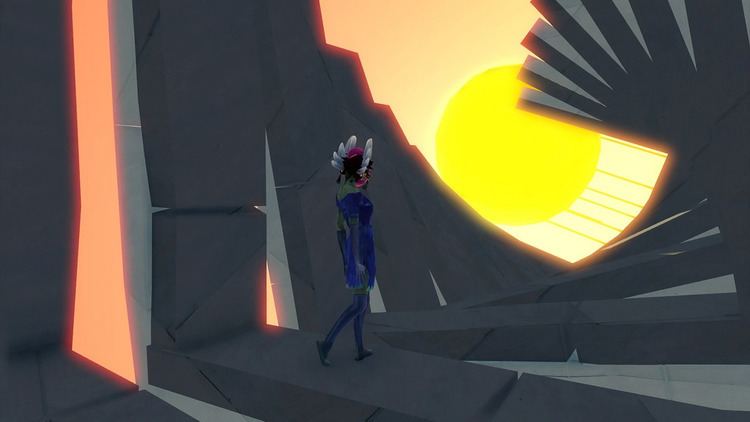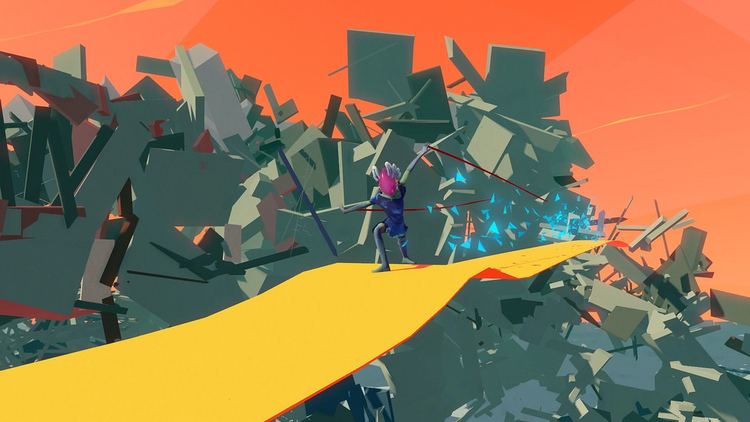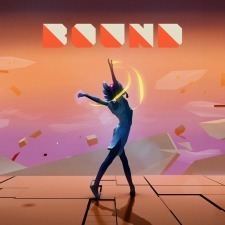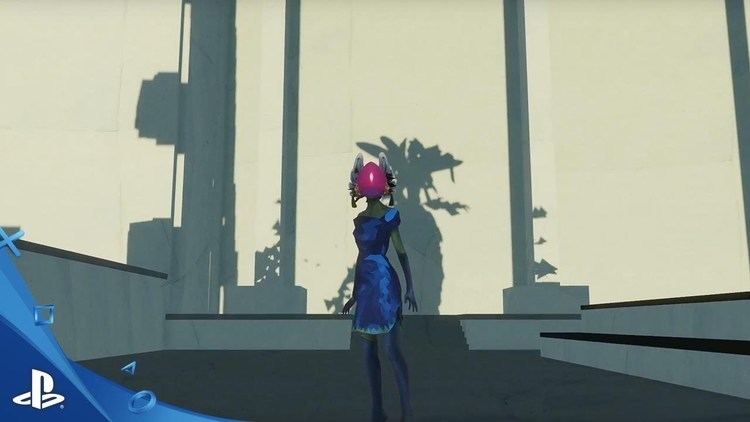7 /10 1 Votes7
7/10 IGN Initial release date 16 August 2016 | 71% Metacritic Release date(s) August 16, 2016 Genres Platform game, Art game | |||||||||||||||||||||||||||||||||
 | ||||||||||||||||||||||||||||||||||
Developers SIE Santa Monica Studio, Plastic Studios, Plastic Similar SIE Santa Monica Studio games, Puzzle video games | ||||||||||||||||||||||||||||||||||
Bound is a platform and art video game featuring a dancer as main character. It was developed by Plastic, published by Sony Interactive Entertainment and released on August 16, 2016, for the PlayStation 4.
Contents

The game received mixed to positive critical reviews, praising its art style and originality, but criticizing the gameplay as shallow.

Gameplay

The player controls an unnamed princess and ballet dancer as she makes her way through surreal, dreamlike environments. She must complete platforming challenges and has the ability to dance to repel enemies.

The game uses an "Edge Guard" to prevent the player from falling off certain platforms, because the developer believed this detracted from the experience by forcing players to pay closer attention to the character's legs than the world. There are places where the figure can fall and die, but it will respawn nearby.
Plot
The game takes place inside the mind of a woman who is revisiting her childhood memories. In the game's world, the main character is a Princess who is following the orders of her mother, the Queen, to vanquish a monster that is destroying the world. According to the game's creative director, "everything in the game is a big metaphor", and there are scenes in the game that show real life and not the game's world.
Development
The creative director of the game, Michal Staniszewski, said that the game took three and a half years to develop. The game was designed to be best played in a single sitting, and he suggested that investigating too much of the game before playing it would cause the experience to be spoiled, comparing it to the games Journey and Firewatch.
Inspiration for the game's idea also came from the game Ico. The game was directed at a target audience of older gamers who have been playing games "their whole life" and are tired of solving puzzles, instead simply wanting an audiovisual experience without frustrating or repetitive gameplay. However, the developers still wanted to include some challenge to the game, so that it was not simply a walking simulator. It was meant to be a short experience as the creative director noted that, like other adults, he now lacked the time to play larger, 100-hour games such as The Witcher 3.
The game's graphics were largely inspired by modern art and its development from the beginning of the 20th century. The game developer Tale of Tales was also cited as an influence in the design of the game, as well as the digital art of the demoscene.
The idea of a dancing main character was not added from the beginning of development. Rather, after one and a half years in development, the developers were disappointed with how similar to a typical game character her movements looked, and were inspired by a video of a modern jazz dance to change their movements to those of a dancer. Motion capture was used on the dancer Maria Udod, who was chosen due to her experience both in ballet and contemporary dance, in order to record her movements for use by the protagonist. Her choreographer was Michał Adam Góral. Every single animation of the character was replaced to change it to a dance move.
The game's developers were forced to sacrifice visual effects for performance, because they did not want the game to run with motion blur or framerate drops, like Uncharted 4, due to the hardware limitations of the PlayStation 4. The game runs at a stable 60 frames per second, and Staniszewski believes that games that run at lower FPS than 60 are not the "proper way that games should look on TVs". He believes that only Nintendo focuses on this aspect of games, while the other consoles sacrifice framerate for graphics.
PlaystationVR
On October 13, 2016 Plastic released a patch that was enabling PlayStation VR compatibility. Later on November 10, 2016 another patch was published that enabled PS4 PRO support including 4K resolution and increased pixel density in VR mode.
Reception
Bound received mixed to positive reviews, with an aggregate score of 71/100 on Metacritic. Chris Carter of Destructoid rated the game 60/100, saying that its graphics are "gorgeous" and "stunning", but calling the movement "stiff" and combat too easy, believing the game leans "too hard" on the platforming aspect. Matt Peckham of Time rated it 50/100, saying that while the game is fun to watch, it is boring to play because it is so easy to navigate the world. Jim Sterling of the Jimquisition gave it the same score, saying that, while beautiful, playing it is a "messy, obstructive hassle" with poor controls and camera movement, as it is unable to commit to either being a walking simulator or a fully realized puzzle platformer and is instead a hybrid of both.
Justin Clark of GameSpot gave the game a 70/100, saying that while its gameplay is "rudimentary", this is made up for by the graphical details of the game, calling each stage a "cubist marvel" and the idea of a dancing main character deserving of praise and saying that it "displays immense amounts of contemplation and ambition in every aspect except gameplay". He claims that "[to] decry it for its overly simplistic mechanics is to ultimately miss the forest for the trees", and that "Bound is digital art installation" whose full impact is only evident in its final moments.
The game was selected to appear in IndieCade 2016.
